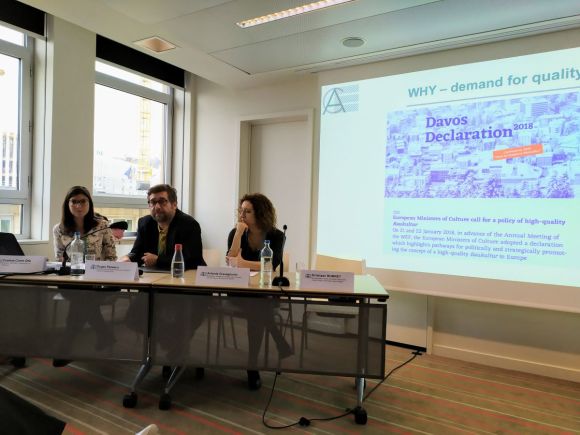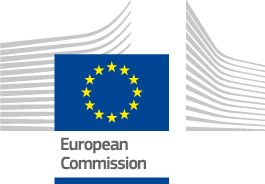
A debate about “The adaptive re-use of our built heritage for a greener Europe” was led on Wednesday morning, in the bossom of the European Regions Week. Too often people attention is focused on big world-wide issues forgetting that a change must be made first in our daily places.
Cristine Clotet Ollé, architect for the Government of Catalonia, Eugen Panescu, member of the Architects' Council of Europe, Antonia Gravagnuolo, researcher at IRISS, Valerio Barberis, Deputy Mayor of Urban planning, Environment and Circular Economy in Prato and Kristiaan Borret, Bouwmaaster maître architecte of Brussel Capital Region, explained why renovation is convenient and how to do it in a functional way.
The main aim of the workshop can be rooted in one of the most famous Charles Baudelaire's quotes “The heart of the city changes faster than the heart of human beings” as well as in the challenge rose to architects about convincing people that architecture can be attractive even if it has been renovated.
It's the transition phase where cities are living, in which smart renovation and reformation are new ways of “building” our places. That's why architects talk about “the heritage of transition”: nowadays abandoned buildings or underused lands have fallen into disuse. When buildings, indeed, are not loved, they lost one of their essential role: to be useful for the community. Furthermore, there is no reason why a building is built if there are no people benefiting from it causing, instead, an undesirable black hole in the urban fabric. In these terms, the re-use architectural style can be meant also as a way to repair cities
The Leeuwarden declaration
Adopted in 2018, the Leeuwarden Declaration is preserving and enhancing the value of the built heritage through an adaptive re-use. It takes the name from the cultural capital of Europe during the European Year of Cultural Heritage and it is supported by the European Federation of Fortified sites, Europa Nostra, the Future for Religious Heritage and the ACE.
It underlines the importance to adopt re-use urban strategies which could make the value of the heritage growing, not only from a cultural point of view, but also from a social, economical and environmental one. If buildings disappear, a part of the city's memory will be lost. That's why the Declaration analyses different key aspects which would contribute to bring benefits through the re-use. For sure, it reduces the consumption of construction materials, but it also helps to increase the attractiveness of some areas. It's making people recognize their cultural roots and live the renovating sites in a fully democratic and cohesive dimension
"How is it made ?"
Before performing new constructions, attention must be paid to what is already in a city. Abandoned urban and rural properties or lands need to be detected firstly.
Here comes into play a research project designed in accordance with EU strategies, such as the circular economy and sustainable use of lands. The project is financed by the European programme Horizon 2020 and it's called CLIC. It applies the principles of the European strategies to cultural heritage aiming to sustainable and resilient development and to identify tools useful to create self-organized and productive circular cities based on re-use. It starts mapping abandonments and collecting data from both governments and citizens.
The second step of CLIC methodology revolves around the coefficient of reusability. It allows to co-design of the city connecting the available opportunities to the concrete needs making it practical through open competitions.
The main purpose of CLIC can be summarised in raising the interest of the investors (local governments or private companies) by showing them the potentialities of forgotten sites. The research involves the cities of Salerno, Rijeka, Amsterdam and the region of Västra Götaland
Facing challenges
Management models can be found in Macrolotto 0, in Prato (Italy) and in the work of the Bouwmeester maître architecte.
Rethinking how to deal with the existing sites starts from considering which are the best reusing strategies. A good example of this work is the former industrial site situated in the metropolitan area of Prato and Florence which was converted in the so-called Macrolotto 0: 65 hectares of land now well-known as a creative district. It represents the core of the "temporary use" key aspect quoted in the Leeuwarden Declaration. The Italian site was already ready to be re-thought, it just needed ideas and renovation. So the "temporary" must be interpreted as a way to show stakeholders how attractive can be an underused area which led Macrolotto 0 to be an example of the circular city.
The adaptive re-use is one more small piece in the framework of a greener Europe. It seems to promise all of us not only more liveable spaces, but also cities that can be called home for real.
Delia Postiglione (Campani, Italy)



